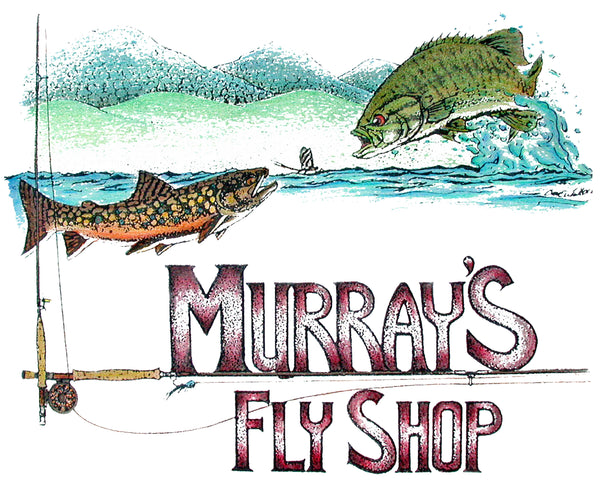Fly Fishing for Smallmouth Bass in Flat Water
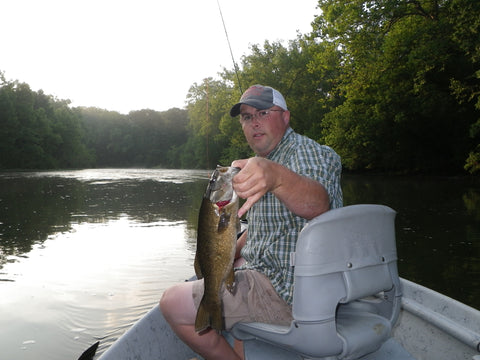
Fly fishing for smallmouth bass in the flat low river levels one often finds in the late summer and early fall is some of the most challenging fly fishing to be found. Challenging because it makes you think. Success seldom comes by luck under these fishing conditions. Rather, you need to evaluate where the bass will feed, how they will feed, their preferred foods and the best tactics and flies to use.
The reward for mastering these challenges is a great feeling of gratification.
Since I play this game often let’s look at four slightly different tactics which can help you in your personal fishing in flat water.
My favorite areas to fish in flat water are the tails of the pools because here the flow of the current helps me keep from scaring the bass as I wade and fish slowly upstream. The wary nature of the large bass in low clear water is the most serious problem you confront now. The telltale waves you create as you wade will quickly scare the bass. The best way to prevent this problem is to wade very slowly and make long casts as you move upstream. The bass also appear to be less wary in low light levels so I usually fish early in the morning and late in the evening.
One evening last August I decided to fly fish for smallmouth bass on a stretch of the North Fork of the Shenandoah River I know very well because I do many of my fly fishing schools there in June. I was shocked when I saw how low this part of the river had gotten in two months. I knew this area held some nice bass so I decided to make the most of the low water level. The first thing I did was to walk upstream around the stretch we fish in my fly fishing schools in June because it was too shallow to fish without scaring the bass. When I got to a stretch that was three to four feet deep I decided to fish it upstream on the surface with the Shenandoah Blue Popper and to punch out long casts. Right away I started catching a fair number of small smallmouth bass. About a half hour before dark I had fished up to the tail of a pool that had a depth over my head in the middle with wheelbarrow size boulders along the left bank in water hip deep. Yes, you are right, it is tough to wade but it also holds a great amount of food and in the low light the smallmouth bass move into this type of water to feed. On my second cast up to these boulders a very large smallmouth bass took my Shenandoah Blue Popper. He turned out to be the second largest bass I had caught in the last five years. I firmly believe he was in the tail of that pool because it held a great amount of food and my upstream approach helped me keep from scaring him.
The fly fishing was so good late in the summer on the North Fork of the Shenandoah River that I decided to experiment one evening. Fortunately I hit on a tactic that both you and I can successfully use in other low stream conditions.
I went into a tail of a pool about 20 miles upstream from the school-area I just discussed. I carefully waded into the side of a broad tail of a pool where the water tapered from two feet deep at the tail up to water four feet deep two hundred feet upstream. I put on a Shenk’s White Streamer size 6 and dressed it and the whole leader liberally with silicone cream dry fly floatant. From my casting position thirty feet upstream of where the tail of the pool feathered out into the riffle bellow I shot a long cast across the stream. Imparting a slow retrieve by stripping the streamer six inches every ten seconds I wobbled the streamer across the surface like a dying minnow. Right away a nice bass took the fly. I fanned successive casts all across the tail of this pool and caught many bass, having one of the most exciting evenings I’ve ever had. On later trips to new areas this ploy was very successful and even though I experimented with other streamers the Shenk’s White Streamer was the most effective.
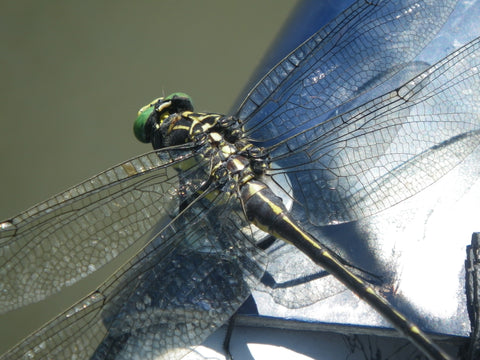
Another type cover that can give you great bass fishing when the rivers are low are the thick aquatic grassbeds. In sections of the rivers where the gradient is low and the current is slow you can see aquatic grassbeds reach almost from bank to bank. The damming effect of these dense beds often shunt the current toward the shaded side of the river because less grass grows here. The shade is always attractive to smallmouth bass so you have many excellent feeding stations along the shaded banks with twenty foot open corridors where little or no grass interferes with your fishing. A very effective tactic is to wade upstream, using the grassbeds to hide your approach and fish your surface bugs along the bank and the open edge of the grassbed. I especially like the green/white Tapply Hair Bug and the Shenandoah Damsel Popper both in size 4 in these areas.
A different situation where aquatic grassbeds can give you great fishing late in the season occurs in the waist to chin deep large pools which have mixed stream bottoms. That is, some areas have solid ledge bottoms where no grass can grow and other areas have soil bottoms which support thick weed growth. The pool takes on a checkerboard appearance of car-size grassbeds and clear water. I recently had a student in my fly fishing school in one of these pools and by picking the pockets of open water with his Shenandoah Chuggar Bug he caught many bass as we waded slowly up through the pool. The grassbeds help hide your approach and they provide shaded feeding stations for the bass.
An entirely different area that can provide good fly fishing late in the season when the rivers get low are the deep cuts between the river-crossing ledges. Many smallmouth bass rivers have numerous tennis court-size cuts five to six feet deep that hold some of the largest smallmouth bass when the rest of the river becomes very shallow. I must caution you that even in this deep water the largest bass are very wary because the water is typically crystal clear. For this reason it is wise to use an upstream approach and cast a deep running fly well upstream of the deep cut and swim it slowly back downstream along the stream bottom. Move upstream slowly and cover all of the deep area thoroughly with your flies. My favorite two flies here are the Murray’s Heavy Black Hellgrammite #4 and the Murray’s Skunk Road Kill Nymph #6.
The final tactic which can be outstanding fly fishing for smallmouth bass in the flat water late in the season is fishing dry flies during the White Fly (White Miller) mayfly hatch. The smallmouth bass seem oblivious to the low water, I suspect, because of the density of the flies on the water and the late hour of the day when the hatch occurs. The specific period for this hatch depends on the geographical stream location, but it is usually in July and August. However, the flies can be on the water for six weeks. The main thing to keep in mind on this hatch is to stay on the river until dark…yes, dark.
The duns start coming off about an hour before dark and the spinners start dropping to the water about a half hour later. At this time you will often have twenty bass rising within casting distance of where you are standing. Don’t “shoot into the covey” but rather pick out a specific bass and cast your fly two feet above his rise form so it will drift right to him. Experiment with a gentle twitching action to get his attention because sometimes this is more effective than a dead drift. Position yourself so you are fishing into the western sky because even after the sun is below the horizon this can illuminate the surface of the water well enough to enable you to catch another dozen bass before it gets dark.
Since this hatch is compressed into such a short time period I want to use dry flies that are durable and float well. I don’t want to waste time changing flies. My favorite dry flies for this hatch are the Light Humpy and the Irresistible both in size 12.
Yes, you can get outstanding smallmouth bass fly fishing in the flat water found from the middle of the season until fall. Just study the water and use the tactics discussed here.
-
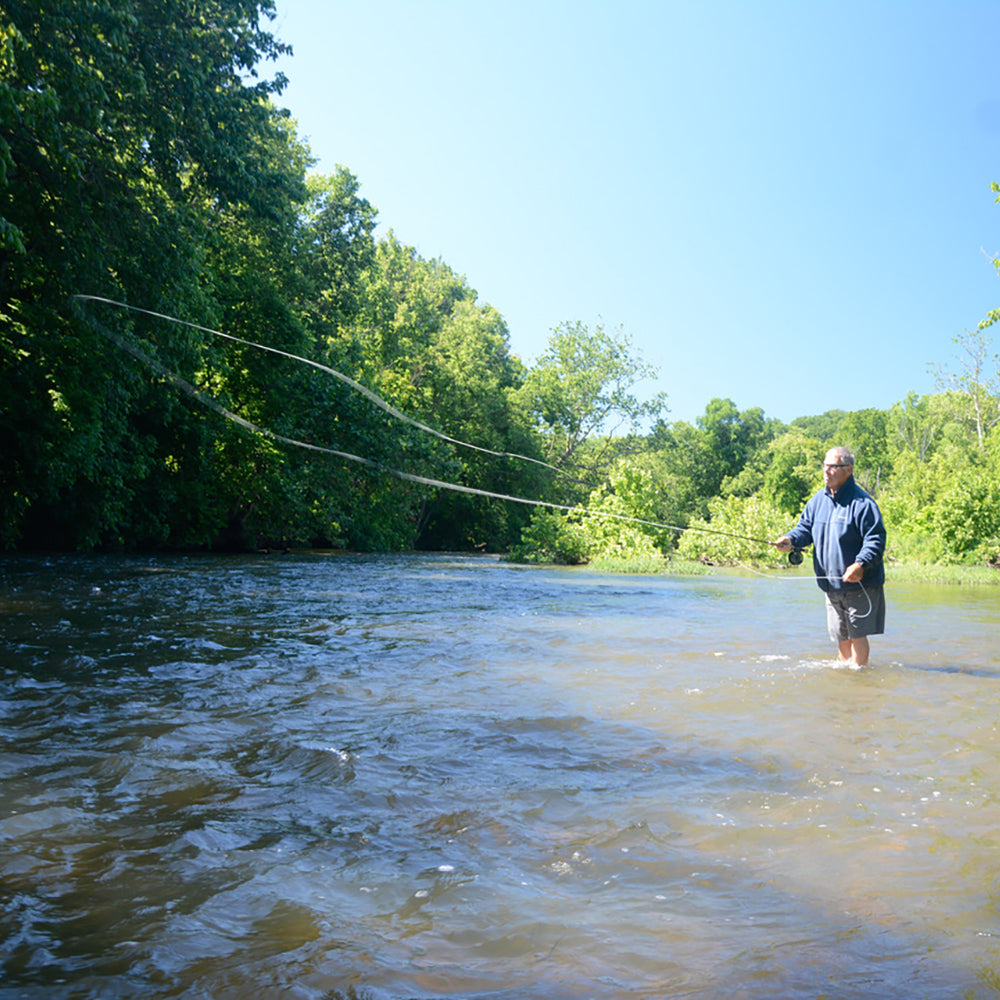
Learn Fly Fishing at Murray’s Fly Shop: Classes, Workshops & Schools
Welcome to Murray’s Fly Shop – Your Fly Fishing Learning Hub At...
-
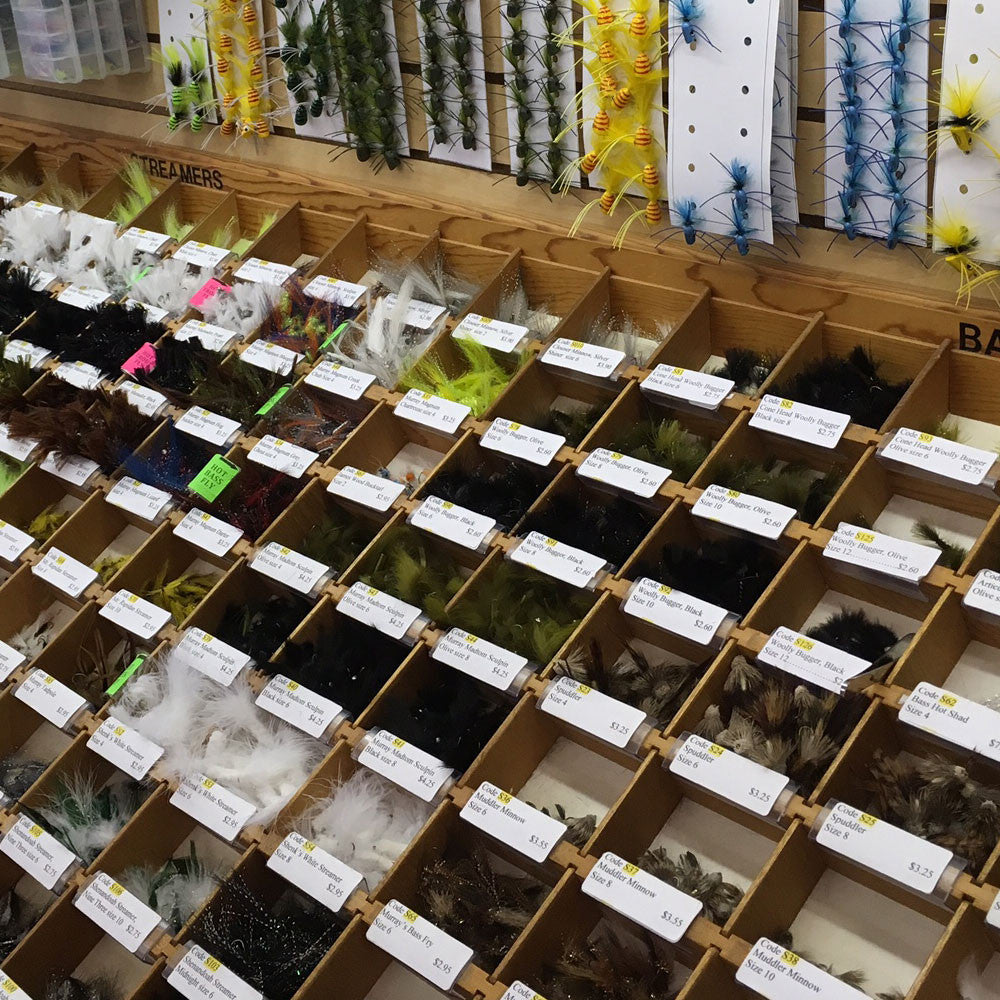
Featured Flies of the Month
Harry Murray's recommended fly list for this time of the year. (March...
-
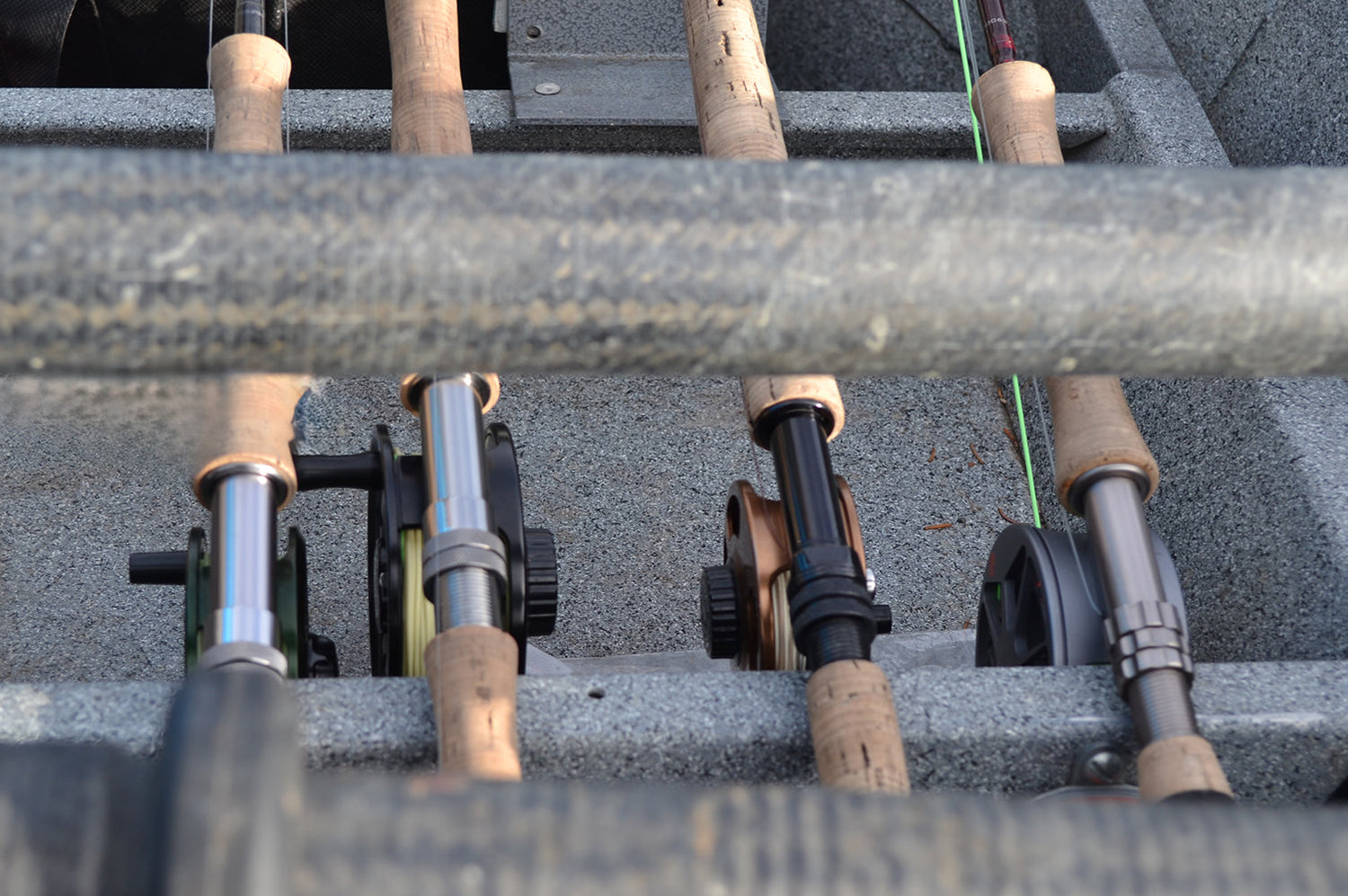
Fly Fishing Rod Outfits
Fly Fishing Rod and Reel Outfits for Smallmouth Bass fly fishing, Trout...
